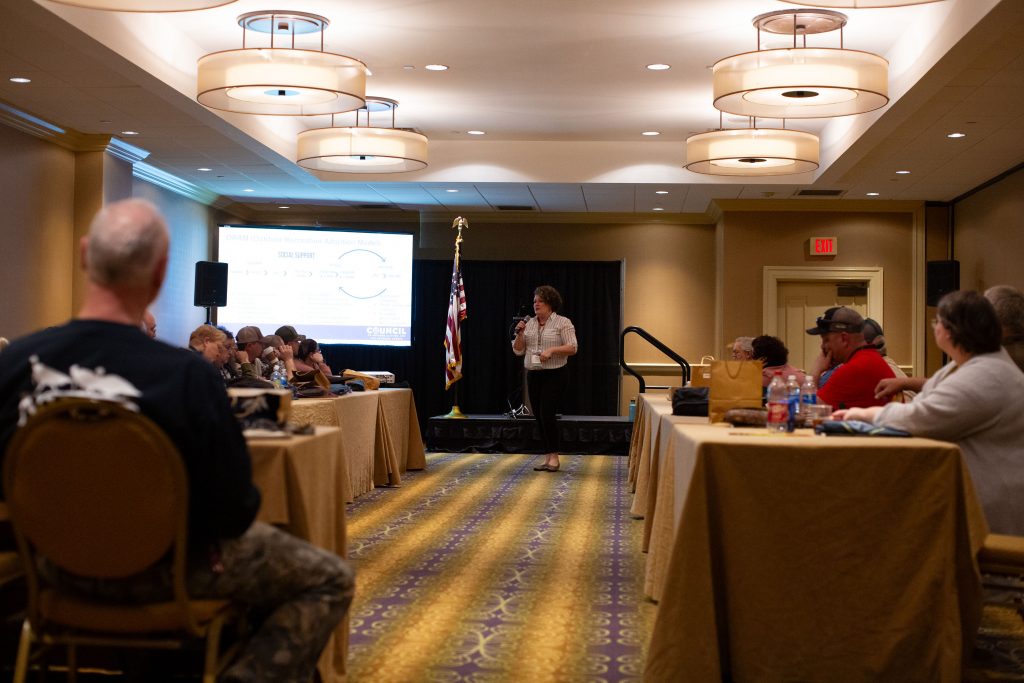The Future of R3 in Hunting and Shooting Sports
The evolution of R3 (Recruitment, Retention, and Reactivation) in the hunting community has been a subject of intense focus and discussion in recent years. R3, an approach aimed at bolstering participation in hunting and shooting sports, is a continuous process of adaptation and improvement.
At the 2024 NWTF Convention and Sport Show, staff and chapter volunteers delved into the emerging challenges facing the R3 movement during the Education and Outreach training meeting. Taniya Bethke, Director of Operations at the Council to Advance Hunting and Shooting Sports, presented insights into overall national trends affecting hunting participation.

Key takeaways from the presentation include:
- National downward trends in hunter participation rates, with an increasing average age of participants.
- A significant increase in female participation, though retention rates among women remain a concern.
- Declining public perception of hunting, with a notable 10 million decline in approval since 2019.
- Despite nationwide trends showing a downhill slump, the 18-35 age range presents potential for reversing the decline.
- Increase in shooting sports participation, with a steady increase in firearm ownership.
Historically, R3 initiatives focused primarily on recruitment, with limited attention to retention and reactivation. Examples of past approaches include youth programs, such as JAKES events and "One and Done" recruitment strategies. Building upon these strategies with hunter retention in mind, a comprehensive evaluation of the programs and broader audience representation will be a focus.
Moving forward, R3 efforts are evolving to address these challenges. Strategies such as providing social support through post-event communication, engaging new audiences through initiatives like Hunt for Good and forging partnerships with local tribes and non-governmental organizations demonstrate a commitment to scalability and inclusivity.
R3 is not a static concept but an ongoing evolution, requiring collaboration, adaptability and a focus on measurable impact. By leveraging partnerships, evaluating strategies and prioritizing social support and retention, the R3 community aims to secure the future of hunting and shooting sports for generations to come.
About the National Wild Turkey Federation
Since 1973, the National Wild Turkey Federation has invested over half a billion dollars into wildlife conservation and has positively impacted over 23 million acres of critical wildlife habitat. The NWTF has also invested over $9 million into wild turkey research to guide the management of the wild turkey population and to ensure sustainable populations into perpetuity. The organization continues to deliver its mission by working across boundaries on a landscape scale through its Four Shared Values: clean and abundant water, healthy forests and wildlife habitat, resilient communities, and robust recreational opportunities. With the help of its dedicated members, partners and staff, the NWTF continues its work to provide Healthy Habitats. and Healthy Harvests. for future generations.
